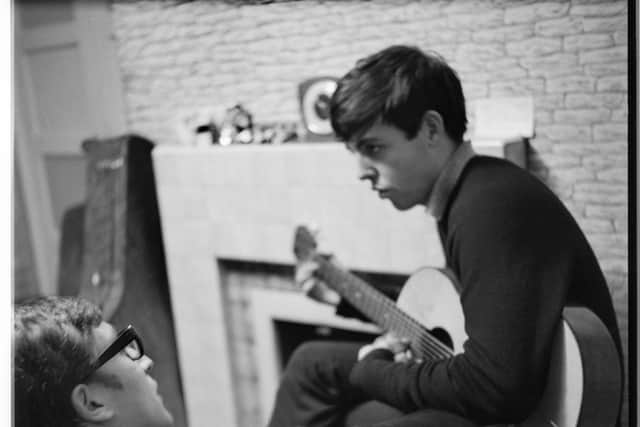Paul McCartney: why is brother Mike opening childhood home where John Lennon wrote Beatles songs, how to apply
and live on Freeview channel 276
The home where Sir Paul McCartney and John Lennon’s song-writing partnership began is set to open its doors to a new generation of aspiring musicians.
The terraced house on Forthlin Road in Allerton, Liverpool, now owned by the National Trust, was the childhood home of Sir Paul.
Advertisement
Hide AdAdvertisement
Hide AdTo mark Sir Paul’s 80th birthday in June, and the 60th anniversary of the Beatles’ debut single ‘Love Me Do’ in October, the Trust is launching The Forthlin Sessions, giving unsigned artists the chance to visit, write and play music in the terraced house.
Its living room was described by one Beatles historian as “the crucible” of the Lennon-McCartney partnership, where hits including ‘I Saw Her Standing There’ and ‘Love Me Do’ were written.
So how are musicians able to visit it?
Here is everything you need to know about it.
Why is the National Trust letting musicians in?
The National Trust took over the property 30 years ago and used pictures taken by Sir Paul’s younger brother - photographer Mike McCartney - to return it to exactly the way it looked when The Beatles’ star grew up there, complete with mismatched wallpaper and patched carpet.
Mike told the PA news agency: “I was 12 when my mum died and my dad had to bring up two boys so the house was in a sorry state. If you had a bath you were joined by the ceiling, because all the paint would flake down.
Advertisement
Hide AdAdvertisement
Hide Ad“The armchair springs stuck out and ripped our clothes to shreds.”


Despite the decor, Mike described the family’s former home as a “special house”, where their father gave the boys instruments because he saw music as a way out of poverty.
Mike was given a drum kit, which came “off the back of a lorry”, and a banjo while Sir Paul was given a guitar and began inviting his friend, Lennon, round to create music.
Mike said: “You could hear them crafting the songs. I would be in another room and would hear them composing. Our kid would play music all round the house, including in the bathroom.”
Advertisement
Hide AdAdvertisement
Hide AdMike describes the house as proof that “from nothing, you can create something special”, adding, “I’m proud of my family and the outcome of that house for all of us.
“If that can be shared with anybody, particularly young people, particularly if they have got nothing and they come there and see they can do something from nothing like we did, then I will be even prouder.”
Beatles historian Colin Hall said: “I think the living room at Forthlin Road is the crucible where the Lennon-McCartney song-writing partnership was nurtured and began, that’s where it took wings.”
He said visitors were often surprised by how small the former council house was, and added: “Because the house is so ordinary, that is what’s inspiring.”
How can artists apply to play The Forthlin Sessions?
Advertisement
Hide AdAdvertisement
Hide AdTo help inspire the new music, members of the public are being asked to share what the creativity sparked at 20 Forthlin Road has meant to them.
Poem ‘An Ordinary House, An Ordinary Street’ has also been released as a short film.
Any unsigned, UK-based music artist over the age of 18 will be able to apply for The Forthlin Sessions; Mike will help to choose the selected musicians, and said: “I hope some of the magic rubs off on them.”
National Trust Director General Hilary McGrady said: “Our places don’t have to be stuck in time; they’re here to keep sparking creativity, dreams, and new ideas.”
To find out more visit nationaltrust.org.uk/the-forthlin-sessions.
Comment Guidelines
National World encourages reader discussion on our stories. User feedback, insights and back-and-forth exchanges add a rich layer of context to reporting. Please review our Community Guidelines before commenting.
